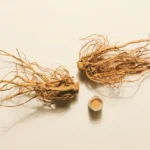History of Botanical Medicine
- By -Maria Joseph
- Posted on
- Posted in Botanical Medicine
Botanical medicine, or herbal medicine, is the practice of using plants for therapeutic purposes. This ancient tradition has spanned cultures, continents, and millennia, offering a deep well of knowledge for modern practitioners and researchers. From the early use of medicinal plants in indigenous cultures to their integration into modern pharmaceutical development, botanical medicine has played a significant role in shaping both traditional and contemporary healthcare practices. In this article, we explore the rich history of botanical medicine, examining its origins, cultural significance, development over time, and its modern resurgence.

Ancient Roots of Botanical Medicine
Early Use of Medicinal Plants
The use of plants for medicinal purposes dates back to prehistory, long before the development of written language. Archaeological evidence suggests that early humans used plants not only for food and shelter but also for their healing properties. Fossilized remains of plants found in prehistoric burial sites show that early humans may have understood the medicinal value of certain plants, such as those used to alleviate pain or treat wounds.
The earliest written records of botanical medicine come from ancient civilizations, such as the Egyptians, Sumerians, and Chinese. In these cultures, plant-based remedies were often intertwined with spiritual or magical practices. Ancient texts and artefacts from these civilizations provide insight into their knowledge of the medicinal properties of plants.
Ancient Egypt
In Ancient Egypt, plant medicine was highly advanced, and many of the remedies used by Egyptians were recorded in texts like the Ebers Papyrus (circa 1550 BCE), which contains more than 700 remedies for a variety of ailments. This papyrus included instructions for using plants like garlic, mandrake, and frankincense for healing purposes. Egyptians were not only concerned with physical ailments but also with the spiritual well-being of individuals, blending herbal remedies with rituals for both health and the afterlife.
Traditional Chinese Medicine (TCM)
The roots of Traditional Chinese Medicine (TCM) trace back over 2,000 years, with texts like the Shennong Ben Cao Jing (The Classic of Herbal Medicine), attributed to Emperor Shennong (circa 2700 BCE). This text outlines hundreds of herbs and their uses, categorizing them based on their medicinal properties. TCM emphasizes the balance between the body’s energies, or Qi, and uses herbal treatments to correct imbalances in the body’s systems. This holistic approach has influenced not only Chinese culture but also many other East Asian healing traditions.
The Greeks and Romans
The Greeks and Romans made significant contributions to the understanding and use of medicinal plants. The Greek physician Hippocrates (460–370 BCE), often called the “Father of Medicine,” recognized the importance of nature in the healing process. He recommended a variety of herbal remedies, many of which were compiled later by his followers.
The Roman scholar Pliny the Elder (23–79 CE) wrote extensively on herbal medicine in his work Natural History, listing over 1,000 plant species and their uses in medicine. One of the most notable Roman physicians, Dioscorides (40–90 CE), wrote De Materia Medica, a text that became the cornerstone of Western herbal medicine for over a millennium.
The Middle Ages and the Renaissance
The Role of Monastic Medicine
During the Middle Ages, the church and monastic orders played a central role in preserving and advancing knowledge about medicinal plants. Monasteries became centres of learning and the cultivation of medicinal herbs, with monks developing elaborate herb gardens and keeping detailed records of plant properties.
One of the most famous medieval texts on herbal medicine is the Hortus Sanitatis (Garden of Health), which was published in 1491. This book, along with other herbals of the time, provided knowledge on the cultivation, preparation, and medicinal uses of plants. Notably, the De Materia Medica of Dioscorides continued to be a significant influence during the medieval period, and many monasteries preserved and transcribed it.
Conclusion
The history of botanical medicine is a testament to the enduring relationship between humans and plants. From its roots in ancient civilizations to its role in modern medicine, plants have been central to healing practices around the world. Today, as interest in natural health continues to grow, botanical medicine is experiencing a renaissance. With ongoing research and innovation, the healing potential of plants promises to remain a crucial part of healthcare for generations to come.



